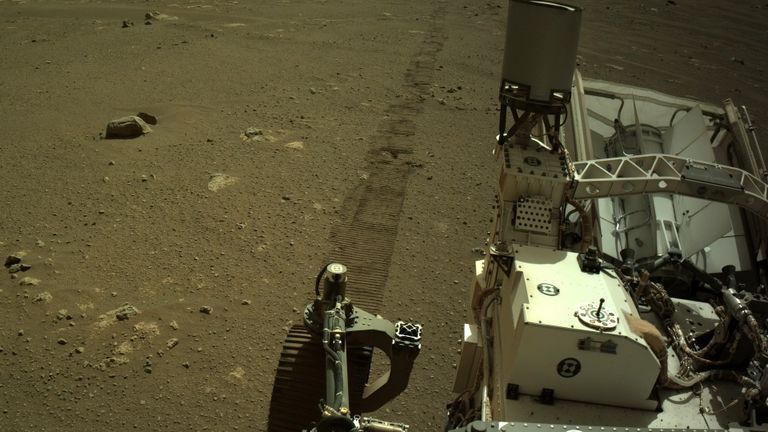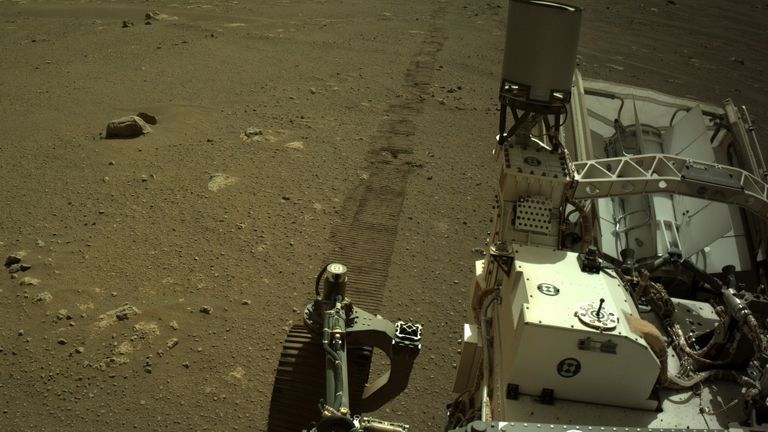NASA’s Perseverance rover has taken a selfie on the Martian surface capturing itself and the Ingenuity helicopter ahead of the first attempt at flight on an alien planet.
The image released by NASA was stitched together from dozens of individual snaps from the rover’s WATSON camera (Wide Angle Topographic Sensor for Operations and eNgineering).
It follows the mini-helicopter Ingenuity surviving its first night alone on the Martian surface detached from the Perseverance rover, which NASA hailed as a “major milestone”.
“The laws of physics may say it’s near impossible to fly on Mars, but actually flying a heavier-than-air vehicle on the red planet is much harder than that,” NASA has quipped.
Ingenuity is going to undergo a handful of tests over the coming days and if all systems are performing as they should be then the rotorcraft will attempt the first ever flight no earlier than 11 April.
It carries as a memento in tribute to flight pioneers from Earth, a piece of cloth that covered one of the Wright brothers’ aircraft wings.
Its launch will also attempt to coincide with the 60th anniversary of the flight of the first human in space, Yuri Gagarin, on 12 April 1961.
Just hours after the flight Perseverance will downlink Ingenuity’s first set of engineering data, and “possibly” images and video from its zoomable cameras, says NASA.
Using this data the Ingenuity team will be able to determine whether the first attempt to fly on Mars was a success, and the results will be discussed in a media conference on the same day.
The flight is a challenge because the Martian atmosphere is just 1% the density of the atmosphere on Earth, meaning the craft may struggle to achieve lift, although it will be assisted by gravity that is just a third as strong as our own.
The little chopper underwent a series of drills simulating the mission in a testing facility in California, including a high-vibration environment to mimic how it will hold up under the launch and landing conditions, and extreme temperature swings such as those experienced on Mars.
The aim is for the helicopter to hover at 3m (10ft) above the surface for around 30 seconds before descending and touching back down.
The autonomous little chopper has an on-board camera, but does not contain any scientific instruments. NASA aims to develop the drone as a prototype to see if it could be worth attaching scientific sensors to similar devices in future.


